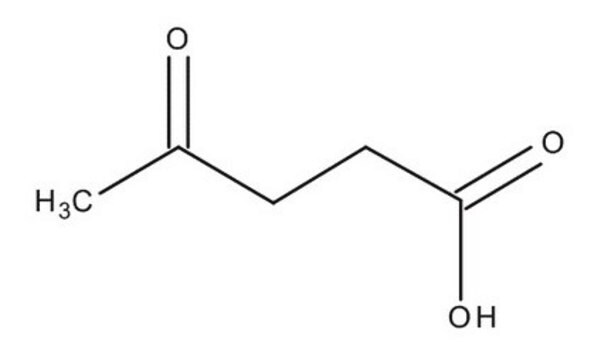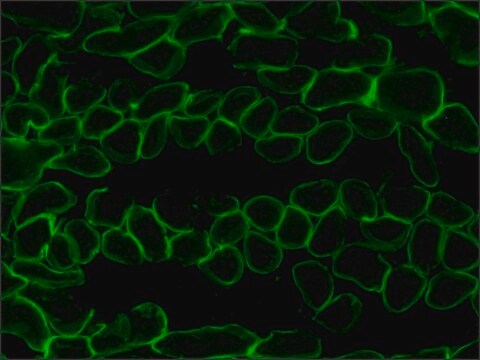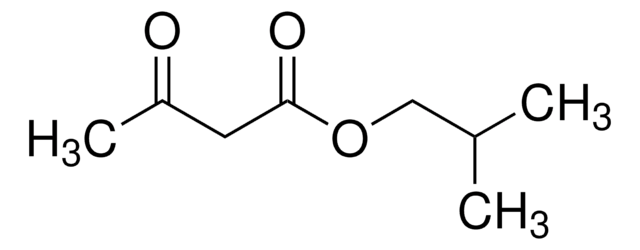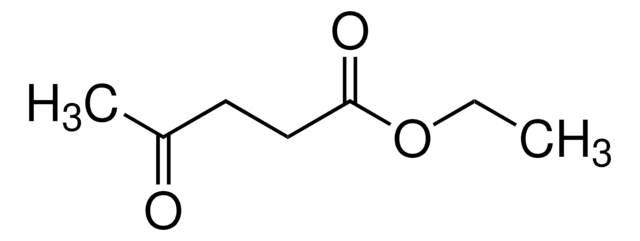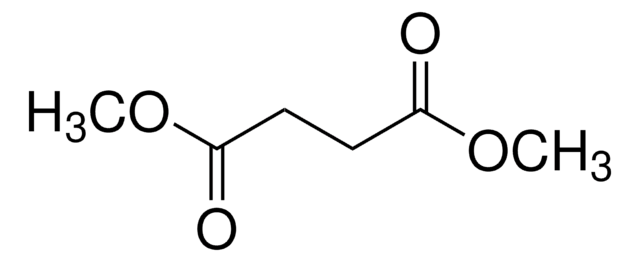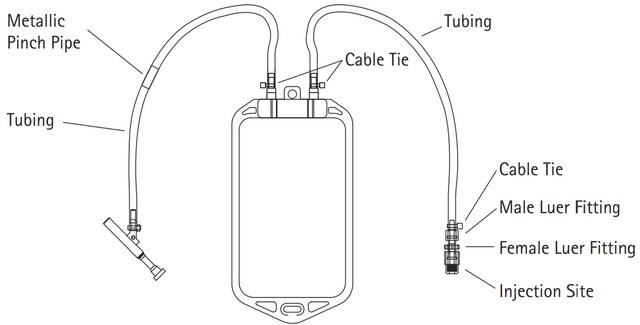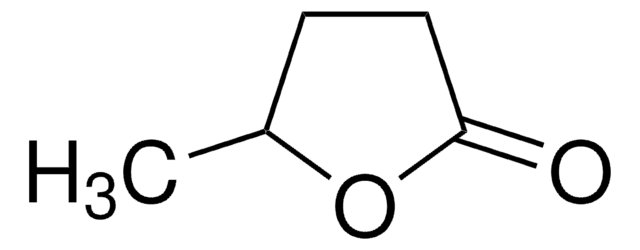W262706
Levulinic acid
≥97%, FG
Synonym(s):
4-Oxopentanoic acid, 4-Oxovaleric acid
About This Item
Fragrance grade
Halal
Kosher
meets purity specifications of JECFA
Recommended Products
biological source
synthetic
Quality Level
grade
FG
Fragrance grade
Halal
Kosher
agency
follows IFRA guidelines
meets purity specifications of JECFA
reg. compliance
EU Regulation 1223/2009
EU Regulation 1334/2008 & 178/2002
FDA 21 CFR 172.515
vapor pressure
1 mmHg ( 102 °C)
assay
≥97%
bp
245-246 °C (lit.)
mp
30-33 °C (lit.)
density
1.134 g/mL at 25 °C (lit.)
application(s)
flavors and fragrances
documentation
see Safety & Documentation for available documents
food allergen
no known allergens
fragrance allergen
no known allergens
organoleptic
caramel; creamy; acidic; sweet; vanilla
SMILES string
CC(=O)CCC(O)=O
InChI
1S/C5H8O3/c1-4(6)2-3-5(7)8/h2-3H2,1H3,(H,7,8)
InChI key
JOOXCMJARBKPKM-UHFFFAOYSA-N
Looking for similar products? Visit Product Comparison Guide
Related Categories
signalword
Danger
hcodes
Hazard Classifications
Acute Tox. 4 Oral - Eye Dam. 1 - Skin Sens. 1
Storage Class
11 - Combustible Solids
wgk_germany
WGK 2
flash_point_f
208.4 °F - closed cup
flash_point_c
98 °C - closed cup
ppe
dust mask type N95 (US), Eyeshields, Gloves
Choose from one of the most recent versions:
Already Own This Product?
Find documentation for the products that you have recently purchased in the Document Library.
Customers Also Viewed
Global Trade Item Number
| SKU | GTIN |
|---|---|
| W262706-100KG-K | |
| W262706-10KG-K | 4061835513437 |
| W262706-25KG-K | 4061835518586 |
| W262706-5KG | |
| W262706-5KG-K | 4061835516452 |
| W262706-10KG | |
| W262706-1KG | |
| W262706-1KG-K | 4061835565726 |
| W262706-1DRUM-K | |
| W262706-25KG | |
| W262706-SAMPLE | |
| W262706-SAMPLE-K | 4061834404552 |
Our team of scientists has experience in all areas of research including Life Science, Material Science, Chemical Synthesis, Chromatography, Analytical and many others.
Contact Technical Service
